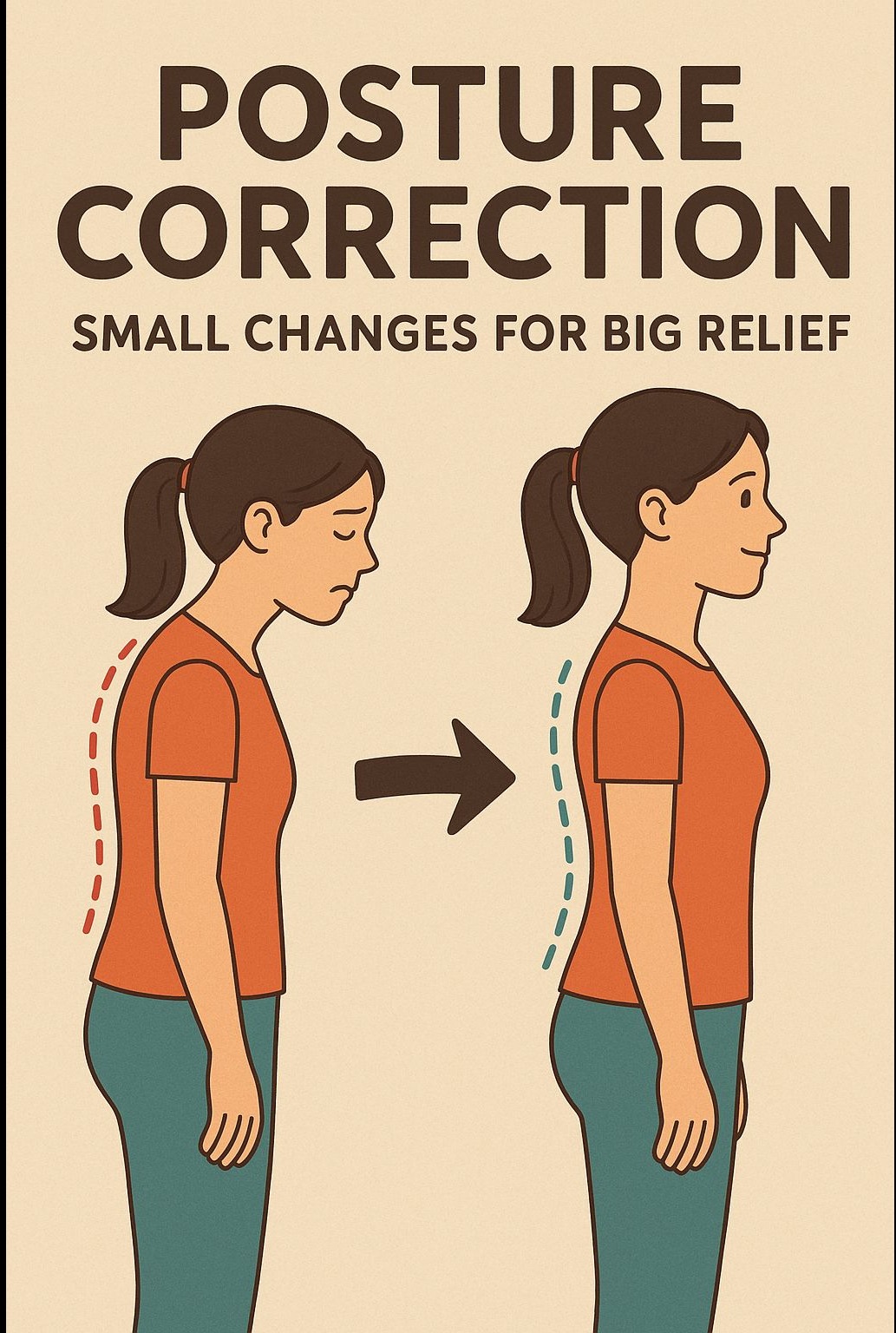



In today’s digital-first world, long hours at the desk, endless meetings, and constant screen time have become the norm. While our work habits drive productivity, they also silently shape something we often overlook—our posture. Over time, slouching shoulders, forward head positions, and prolonged sitting can result in neck stiffness, back pain, fatigue, and even a drop in confidence. The good news? You don’t need dramatic lifestyle changes or expensive equipment to fix your posture. Small, mindful corrections can bring big relief—both physically and mentally. Why Good Posture Is More Than Just “Sitting Straight” Posture is the way you hold your body while sitting, standing, or moving. It is not only about appearance but also about function. Proper posture ensures that your muscles, joints, and ligaments work efficiently, without unnecessary stress. Benefits of good posture include: • Reduced pain and tension: Minimizes strain on your spine, neck, and shoulders. • Better breathing: An upright position allows lungs to expand fully. • More energy: Less muscular fatigue, more focus and productivity. • Professional presence: Confident body language improves how others perceive you. On the flip side, poor posture over months and years may lead to chronic pain, reduced mobility, and workplace burnout. Small Changes That Lead to Big Relief 1. Set Up an Ergonomic Workspace Your workspace has a direct impact on your posture. A few tweaks can make it spine-friendly: • Screen at eye level: Prevents you from bending your neck forward. • Chair support: Use a chair with lumbar support—or place a small cushion/towel behind your lower back. • Feet flat on the floor: Or use a footrest if needed. • Keyboard and mouse placement: Keep elbows at 90 degrees, close to your body. 2. Follow the 20-20-20 Rule Staring at screens strains your eyes and encourages slouching. Every 20 minutes, look at an object 20 feet away for at least 20 seconds. This simple habit reduces eye fatigue and serves as a reminder to reset your posture. 3. Strengthen Your Core Muscles Your core acts like a natural corset for your spine. Weak abdominal and back muscles often lead to slouching. • Try planks, bridges, and seated leg lifts. • Even 5–10 minutes daily can support your posture significantly. 4. Move Every Hour The body is designed for movement, not prolonged sitting. • Stand, stretch, or walk for 2–3 minutes every hour. • Rotate your shoulders, tilt your head gently side-to-side, or do seated stretches. • Consider a short standing meeting or walking call. These micro-breaks release tension and keep your posture from collapsing. 5. Mind Your Mobile Habits “Text neck” is a modern epidemic. Constantly looking down at your phone adds 20–30 pounds of extra pressure on your spine. • Hold your phone at eye level. • Use voice commands instead of prolonged texting. 6. Train Your Body Awareness The hardest part about posture correction is remembering it. • Set phone reminders that say: “Sit tall” or “Check posture.” • Place a sticky note on your monitor. • Over time, awareness becomes habit, and habit becomes second nature. The Bigger Picture: Posture Is Self-Care Correcting posture is not about rigidly sitting straight all day. It’s about balance, awareness, and movement. When you make small, consistent changes, you: • Prevent long-term spinal issues • Improve productivity and focus • Enhance your overall wellbeing How Physionautics Helps You Stay Pain-Free At Physionautics, we go beyond temporary fixes. Our team of physiotherapists focuses on: • Posture correction therapy – to retrain your body alignment • Workstation ergonomics guidance – so your office setup supports your health • Personalized exercise plans – tailored to your lifestyle and goals • Pain management & rehabilitation – for back pain, neck stiffness, and work-related injuries
We hate spam too.